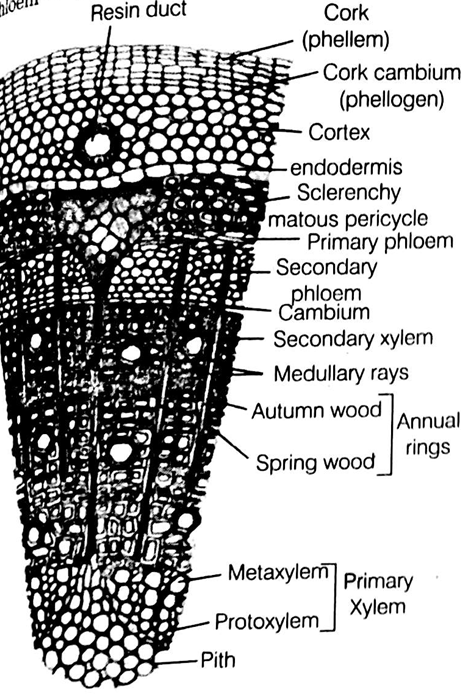Seed coat is not thin, membranous in
maize
coconut
groundnut
groundnut
B.
coconut
The seed coat is thick in coconut seed and thin, membranous in groundnut, gram and maize seeds.
In China rose the flowers are
actinomorphic, hypogynous with twisted aestivation
actinomorphic, epigynous with valvate aestivation
zygomorphic, hypogynous with imbricate aestivation
zygomorphic, hypogynous with imbricate aestivation
A.
actinomorphic, hypogynous with twisted aestivation
Actinomorphic (star-shaped) can be divided into 3 or more identical sectors, which are related to each other by rotation about the centre of the flower, e.g., china rose. Zygomorphic flowers can be divided by only a single plane into two mirror-image halves., e.g., orchids.
Valvate aestivation: The sepals or petals in whorl just touch one another at the margin, e.g., Calotropis.
Twisted aestivation: One margin of the appendage overlaps that of the next one, e.g., china rose. Imbricate aestivation the margins of sepals or petals overlap but not necessarily in a specific direction. e.g cassia.
The wheat grain has an embryo with one large, shield-shaped cotyledon known as
Epiblast
Coleorrhizia
Scutellum
Scutellum
C.
Scutellum
The grain of wheat, maize or rice is a caryopsis. The embryo in such grains lies laterally near the base of the grain. The embryo consists of an upper large, shield-shaped cotyledon known as scutellum. The scutellum is closely pressed against the endosperm and helps in the translocation of nutrients from endosperm to the growing embryo at the time of germination and seedling growth.
Among bitter gourd mustard, brinjal, pumpkin, China rose, lupin, cucumber, sunn hemp, gram, guava, bean, chilli, plum, Petunia, potato tomato, rose, With potato, onion, aloe and tulip, how many plants have hypogynous flower?
Six
Ten
Fifteen
Fifteen
C.
Fifteen
|
|
Flowers |
|
|
Hypogynous |
Perigynous |
Epigynous |
|
Gynoecium present above all the floral parts Ovary is superior |
Gynocecium present in the centre. Other part almost at same level. Ovary half inferior, e.g., Plum,rose |
Ovary enclosed by thalamus and gets fused with it Other parts above ovary Ovary inferior e.g., Guava, cucumber. |
Pulm, rose are perigynous and guava, cucumber are epigynous. So, total remaining plants are hypogynous.
Read the different components from I to IV in the list given below and tell the correct order of the components with reference to their arrangement from outer side to inner side in a woody dicot stem:
(a) Secondary cortex
(b) Wood
(c) Secondary phloem
(d) Phellem
The correct order is
(c), (d), (b), (a)
(a), (b), (d), (c)
(d), (a), (c), (b)
(d), (a), (c), (b)
C.
(d), (a), (c), (b)
The correct order of arrangement of the given components from outside to inside in a woody dicot stem is as follows:
Phellem  Secondary cortex
Secondary cortex  Secondary phloem
Secondary phloem  wood
wood
TS of a typical dicot stem showing secondary growth
